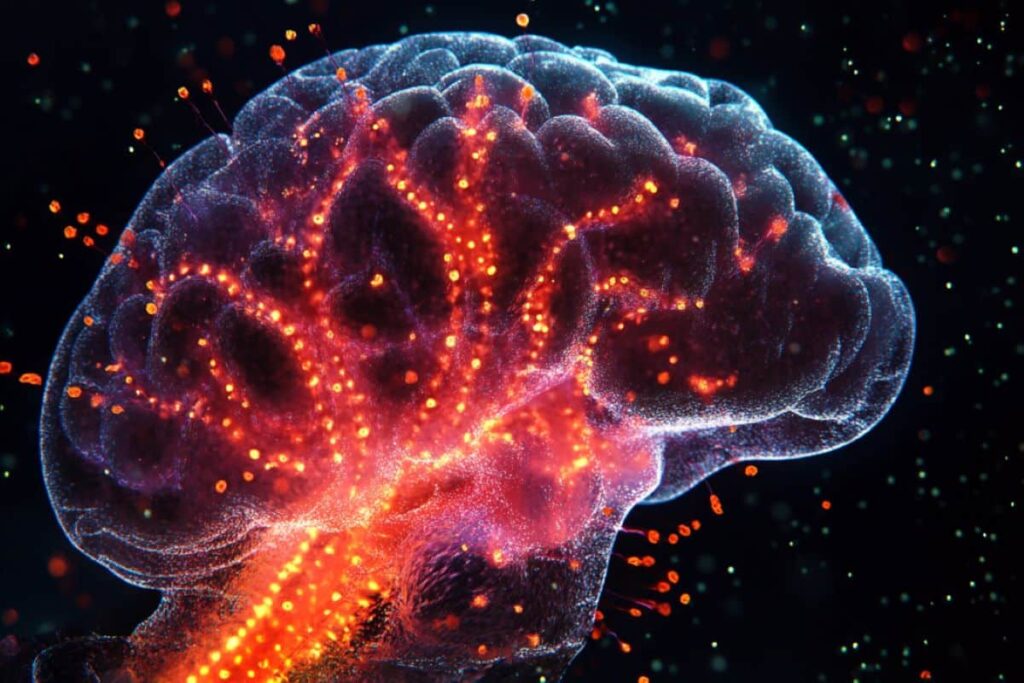Introduction:
The herpes simplex virus type 1 (HSV-1), commonly known for causing cold sores, is a widespread infection that affects a significant portion of the global population. While many people are familiar with its symptoms around the mouth, few are aware of its potential to silently invade the brain. This blog post delves into the mechanisms by which HSV-1 can enter the central nervous system, its effects on the brain, and the latest research findings on this topic.
Understanding HSV-1:
HSV-1 is a highly contagious virus that primarily spreads through oral contact, such as kissing or sharing utensils. It can also be transmitted through skin-to-skin contact. Once infected, the virus establishes latency in the trigeminal ganglion, a cluster of nerve cells near the ear. From there, it can reactivate and travel to other parts of the body, including the brain. HSV-1 is an incredibly common virus, with the World Health Organization (WHO) estimating that approximately 67% of the global population under 50 years old are infected.

Key Points:
- HSV-1 is highly contagious.
- It often causes cold sores around the mouth.
- The virus can remain dormant in the body for years.
The Silent Invasion:
HSV-1 can enter the central nervous system through two main pathways: the trigeminal nerve, which connects the face to the brain, and the olfactory nerve, responsible for the sense of smell. These nerves provide a direct route to the brain, allowing the virus to bypass the blood-brain barrier. Once inside the brain, the virus can spread to various regions, including the brainstem, hypothalamus, and other cranial nerve nuclei. This invasion can lead to inflammation and damage, even if it doesn’t cause full-blown encephalitis (inflammation of the brain).
The Silent Invasion:
HSV-1 can enter the central nervous system through two main pathways: the trigeminal nerve, which connects the face to the brain, and the olfactory nerve, responsible for the sense of smell. These nerves provide a direct route to the brain, allowing the virus to bypass the blood-brain barrier. Once inside the brain, the virus can spread to various regions, including the brainstem, hypothalamus, and other cranial nerve nuclei. This invasion can lead to inflammation and damage, even if it doesn’t cause full-blown encephalitis (inflammation of the brain).
Effects on the Brain:
The presence of HSV-1 in the brain can have significant neurological impacts. Conditions such as encephalitis characterized by severe inflammation and swelling of the brain, can be life-threatening. Additionally, recent studies have suggested a potential link between HSV-1 and neurodegenerative diseases like Alzheimer’s disease. The virus’s ability to cause chronic inflammation and damage to brain cells may contribute to the progression of these conditions.
While many HSV-1 infections remain asymptomatic or cause mild cold sores, the virus can sometimes reach the brain, leading to serious conditions like herpes simplex encephalitis (HSE). HSE is a severe brain inflammation that can result in long-term neurological damage or death if not treated promptly.
Potential Neurological Impacts:
- Acute Encephalitis: Characterized by rapid onset of fever, headache, confusion, and seizures.
- Chronic Conditions: Recent research suggests a potential link between HSV-1 and neurodegenerative diseases such as Alzheimer’s disease, due to the virus’s ability to cause chronic inflammation and neuronal damage.

Mechanism of Latency and Reactivation:
Once in the nervous system, HSV-1 can enter a dormant state, evading the immune system. However, various factors such as stress, immunosuppressant, or other infections can trigger reactivation, during which the virus can travel back to the periphery or spread further within the CNS.
Research and Discoveries:
Recent advancements in virology have provided deeper insights into HSV-1’s behavior in the brain. Studies have shown that HSV-1 can cause disruption of the blood-brain barrier, a protective layer that prevents harmful substances from entering the brain. leading to further complications can lead to further inflammation and neuronal damage. Research published in the Journal of Virology has highlighted the role of microglia, the brain’s resident immune cells, in responding to HSV-1 infection and contributing to ongoing inflammation.
Key Findings:
- HSV-1’s ability to evade the immune system contributes to its persistence in the CNS.
- Damage to the blood-brain barrier by HSV-1 increases the risk of secondary infections.
- Microglia activation plays a crucial role in HSV-1-induced inflammation.
Coping and Prevention:
Preventing HSV-1 infection involves practicing good hygiene, such as avoiding sharing utensils and personal items, and using barrier protection during oral contact. For those already infected, antiviral medications like acyclovir, valacyclovir, and famciclovir can help manage symptoms and reduce the frequency of outbreaks6. Early detection and treatment are crucial for preventing severe complications, including brain infections.
Prevention Tips:
- Avoid direct contact with cold sores.
- Use antiviral medications as prescribed.
- Seek medical advice if experiencing symptoms of neurological complications.
Personal Stories and Testimonials:
Living with HSV-1 can be challenging, especially when it affects the brain. Personal stories from individuals who have experienced HSV-1 related neurological issues highlight the importance of awareness and early intervention. These stories also emphasize the need for support and understanding from the community.
Conclusion:
HSV-1 is more than just a cause of cold sores; it has the potential to silently invade the brain and cause significant neurological damage. Understanding the mechanisms of HSV-1 infection and its effects on the brain is crucial for developing effective prevention and treatment strategies. By raising awareness and promoting early intervention, we can help reduce the impact of this common yet potentially dangerous virus.
References:
- “Herpes simplex virus – World Health Organization (WHO)”

